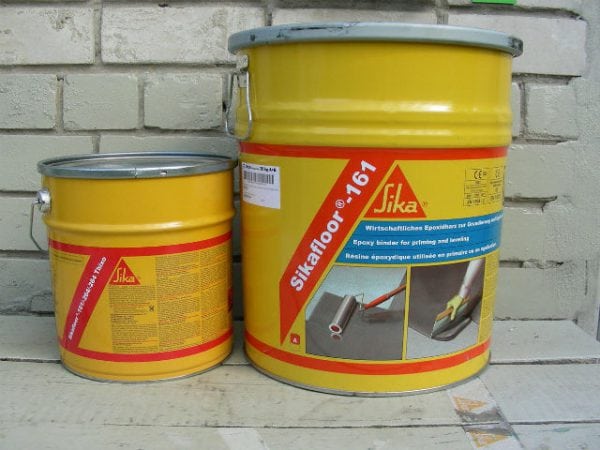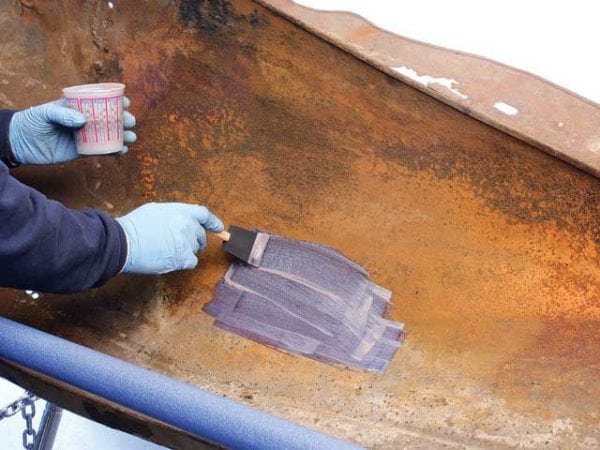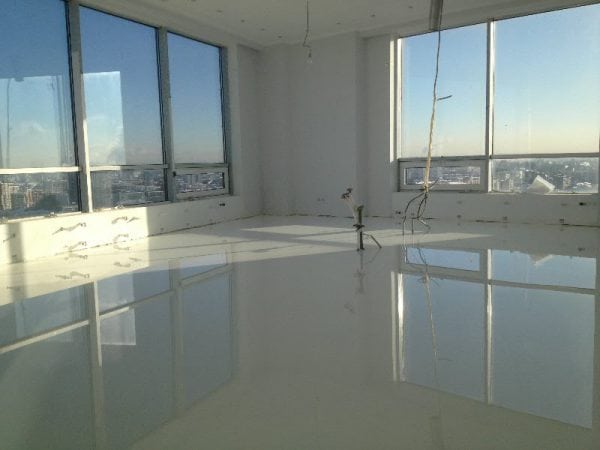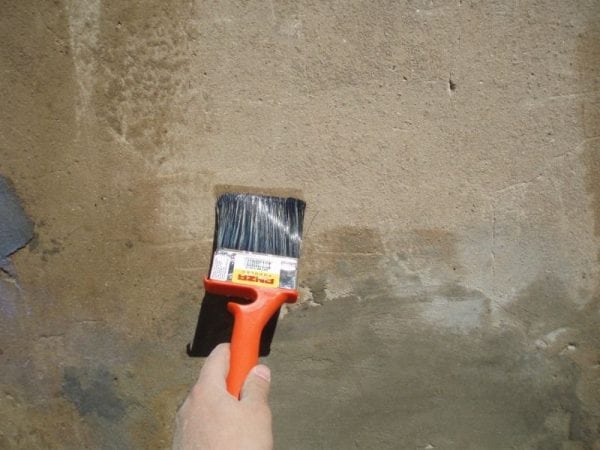Despite some of the difficulties of its practical use, an epoxy primer for metal remains one of the most effective ways to combat corrosion. Especially - for components and parts that constantly work in conditions of high humidity.
- Types of epoxy primers
- Consumer Features
- Technology of application on concrete surfaces
- Processing conditions
- Solution preparation
- Application
- Primer technology for metal surfaces
- Safety precautions
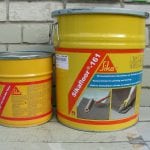
Types of epoxy primers
Like any other epoxy composition (for example, adhesives), according to the certificate, the epoxy primer mixture must be implemented in a two-component composition, both parts of which are prepared immediately before use.
An exception is compositions for pre-coating the surface of a car body. Some manufacturers of such a primer release it in an aerosol can. Despite the external usability of such a composition, in practice, car owners do not really appreciate it.
The reason is that drying in this case is much slower than with traditional application. Therefore, the use of such coatings in the can justifies itself only after prolonged breaks in the use of a car.
Certificates of compliance usually indicate the area of rational use of the material.
Primers based on epoxy compositions are classified by the following indicators:
- What material will be coated - steel or concrete (for other coatings, the use of such primers does not make sense).
- By curing temperature - room or elevated.
- For compatibility with subsequent coatings (epoxy primers, at least, should have increased adhesion to enamels and paints based on polyurethane).
- According to the hardener substance (based on ensuring minimal toxicity, polyamide-based curing compositions are more often used).
Consumer Features
Regardless of the manufacturer, the epoxy primer-enamel for metal has the following operational advantages:
- high adhesion to a metal surface (while the adhesion coefficient does not depend on the humidity of the steel);
- exceptional resistance to corrosion, which is determined by one hundred percent continuity of the finish layer;
- chemical inertness against the effects of aggressive environments, including acids and alkalis (another reason why these types of primers are used to cover problem areas in cars);
- high impact strength during dynamic impacts in the bottom of a car of stones, gravel and other solid particles;
- independence from the material of the initial surface - epoxy primers act equally effectively on steel, cast iron, and concrete.
It is important that the effectiveness of the type of primer under consideration does not depend on the type of primary coating.At the same time, primers based on epoxy compositions are characterized by a relatively high specific consumption, which reaches 300-500 g / m2.
to contents ↑Technology of application on concrete surfaces
As you know, concrete (and especially reinforced concrete) is susceptible to atmospheric corrosion. It manifests itself in local crumbling of the surface layers of the material, loss of its strength characteristics, up to chipping of parts of the concrete coating, which is under constant exposure to moisture.
to contents ↑This is typical not only for the exteriors of buildings, but also for internal work, in particular with bulk concrete floors, as well as for concrete tanks designed to store process water. Therefore, anti-corrosion treatment of concrete is not a luxury, but a condition for ensuring its durability.
Processing conditions
Coating concrete with epoxy primer compositions is as follows. In the room where the work will be carried out, it is necessary to ensure a temperature of at least + 15 ° C. This is due to the fact that the compositions under consideration are heterogeneous components - fillers, plasticizing additives, etc., most of which lose their effectiveness at low temperatures.
Limitations exist for relative humidity indicators. Unlike cars, where the treated surface is dense, there are always micropores in concrete or reinforced concrete, which, when filled with moisture, can disrupt the finish. This is especially important if in the future no further processing of the floor is provided.
The surface to be treated is thoroughly cleaned from dust, various grease and dirt. After that, the floor is treated with any kind of organic solvent, and wiped with a cloth to dryness.
to contents ↑Solution preparation
Next, the primer itself is prepared for use: the composition of the base is mixed to a homogeneous state, and the amount of hardener specified in the instruction is added to it. The resulting composition is also thoroughly mixed.
to contents ↑At temperatures close to the minimum recommended, the finished primer may have a high viscosity, which is not very convenient for working with it. In this case, it is permissible to add a solvent in an amount of not more than 5-10% of the total volume.
Application
The composition is applied using a roller, and for large and even surfaces you can use a spray gun. The finished composition must be applied to the surface in 30-40 minutes, otherwise the composition will thicken and become unsuitable for use.
After drying (for normal conditions, the soil is ready for use, according to the certificate, does not exceed 10-12 hours), floor coverings can be glued or painted on the surface of the concrete floor.
to contents ↑Primer technology for metal surfaces
The main feature of work with these compositions on steel is the possibility of applying a primer to wet surfaces, including those where there are traces of rust. Sometimes a two-layer primer is used, but the previous layer must be completely dry, otherwise the epoxy composition will stratify, and the base of the car underbody will in some places be unprotected.
Given the more complex surface of the machined parts of the car, the primer is best done using a roller. As for the previous case, the amount of the finished composition should be correlated with the duration of its application to the surface of the car.
To speed up the drying process, the temperature of the finished mixture increases sharply. This is not a manufacturing defect, and is specified in the certificate of conformity.
to contents ↑It is a mixture that is at elevated temperature, and it is necessary to quickly apply a car to the treated surface.
Safety precautions
Certificates of conformity warn of sufficient toxicity of such substances:
- All types of primers based on epoxy are highly flammable, so work must be carried out away from flame sources.
- Since the material quickly sticks to the hands, rubber gloves must be used.
- For reasons of toxicity, work is carried out in well-ventilated areas. It is especially dangerous that the components of the primer can get on food.
Certificates for such types of primers provide for a certain period of warranty coverage: it should not be less than 12 months.

